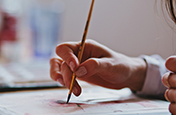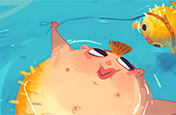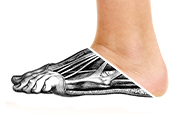How to draw manga: Getting started for beginners.
Explore Japanese comics’ influential visual style and get advice on learning to draw manga and anime-style sequential art.
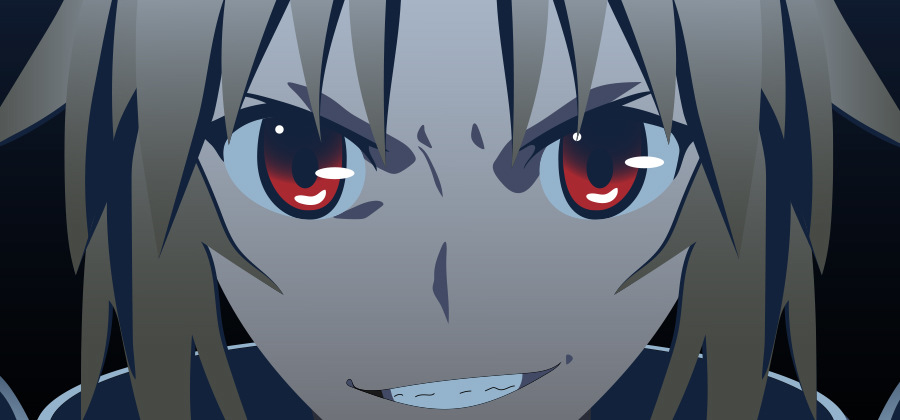
What is manga?
Manga is a catch-all term for Japanese comics. Like comic books from North and South America and Europe, manga includes a near-infinite array of genre and styles. Manga includes science fiction, such as the cyberpunk dystopia Katsuhiro Otomo’s Akira, historical fiction like Osamu Tezuka’s Buddha and superhero action comedies like ONE’s and Yusuke Murata’s One-Punch Man. You’ll see manga in drama, high school comedy, romance, horror and more.
In Japan, manga was historically segmented into categories by gender and age group, the two most prominent being shonen (for young boys) and shojo (for young girls). The lines between those categories have become blurrier in recent years and are generally nonexistent outside of Japan.
There are recognisable visual and storytelling conventions in manga and a whole generation of fans and young artists have found inspiration in the style and visual language of Japanese comics. Media like Avatar: The Last Airbender, Steven Universe and modern Disney cartoons like Big Hero Six all show manga influence.
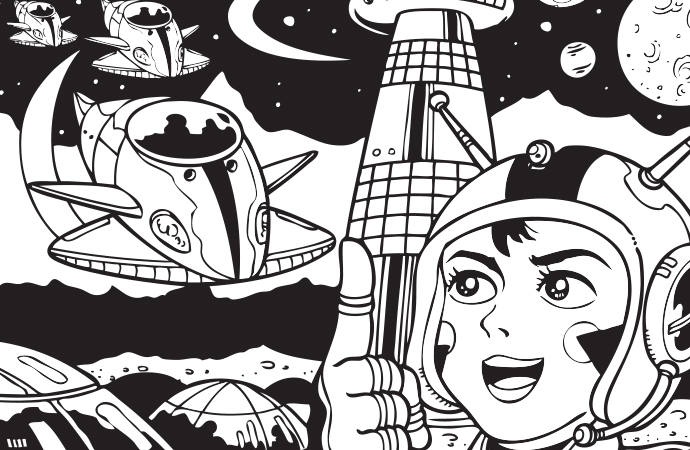

How to start drawing in a manga style.
Aspiring manga artists can learn by trying to replicate particular comics or cartoons that inspire them. “The first step is to allow yourself this period of complete lack of originality,” says author and manga instructor Mark Crilley. “Consider yourself like the apprentice learning from a master.” Writer and illustrator Mildred Louis began that way too. “I started drawing by basically copying anime,” she says.
“As you learn the skills, consider yourself like the apprentice learning from a master.”
Not only will you sharpen your eye, but you’ll get your hand accustomed to the pen or stylus. “Your muscles are not trained yet and so much of drawing is muscle memory,” comics artist Ethan Young says.
However, copying is very different from plagiarism. While replicating other work as a drawing exercise is valuable, don’t pass it off as your own.
Understanding manga proportions.
Manga characters’ anatomical proportions are part of what makes it instantly recognisable. Manga eyes tend to be bigger than in real life, while mouths are smaller and the heights of chins, noses and foreheads all differ significantly from a real human body. Manga hair often defies gravity and facial expressions look nothing like what you’d see in art striving for realism. This stylisation, however, doesn’t mean drawing manga is simple.
“When I started drawing manga faces, I went through this two-step process,” says Crilley. “I thought, ‘This can’t be that hard. It’s cartoony.’ But once you start trying to do it, you realise it really is hard. There’s this careful balance with the facial features that you have to pay attention to — if you don’t nail it, the whole thing falls apart.”
“The biggest thing I recommend is life drawing.”
While it may sound counterintuitive, practice drawing real-life anatomy. “The biggest thing I recommend is life drawing,” says Louis, who notes that many cities have classes fairly accessible to the public. “You need a good understanding of proportions so you can better adjust them when you want to go super stylistic.”
Get a crash course in drawing manga-style art.
In the first of three sessions, watch Mark Crilley walk you through step-by-step manga illustrations in this live drawing tutorial video on Behance.
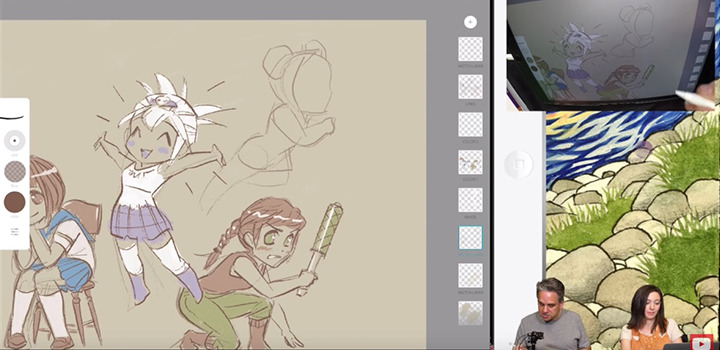
Learning manga’s visual language.
Comics and cartoons use a visual shorthand to convey emotions, actions and ideas. In Western comics and cartoons, a sleeping character might have a few Zs coming from their mouth. When a character suddenly gets an idea, a light bulb appears over their head.
Manga has these visual shortcuts too. A giant bead of sweat on a character’s head means they’re exasperated or frustrated. A snot bubble coming out of someone’s nose means they’re asleep. Motion lines behind a character can mean they’re moving, but they can also indicate that a character is making a dramatic statement or even that someone is especially determined, maybe to a ridiculous extent. If a character’s embarrassed, they’ll die (temporarily) and turn into a ghost.
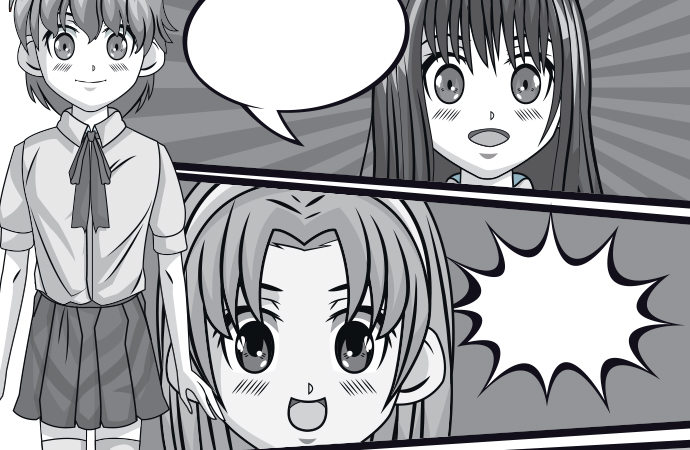
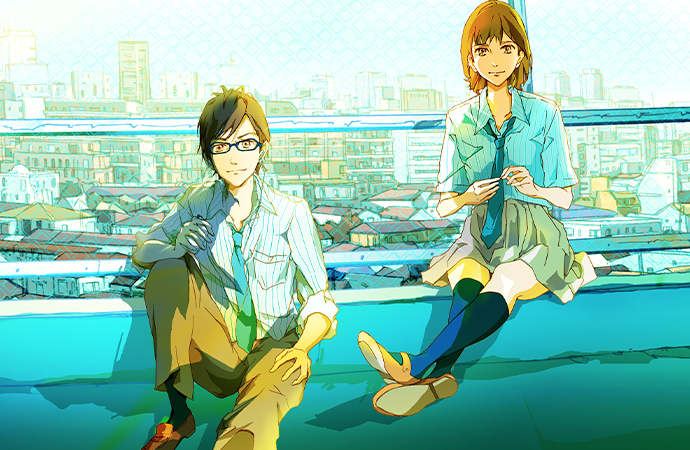
Many of these symbols began as literal representations before moving into abstraction. “The anger symbol began as a representation of a bulging vein,” says Crilley. “It’s turned into an icon of three or four curved lines. To the uninitiated, it might look like some kind of sparkle or star shape.”
This visual language also includes playing with different visual styles in the same comic. An aggressive character might be drawn in a more realistic or detailed style to stress that anger, whereas a character who’s the butt of a joke could look more cartoony. To become more familiar with these visual shortcuts, study a few broadly popular manga comics, such as Naruto, Case Closed or Oh My Goddess! Or peruse the anthology magazine Shonen Jump to see varying art styles’ approaches to these shortcuts in each volume.
Cultivating your own manga style.
Every established manga artist has their own style. There’s a stark contrast between the darkly futuristic illustrations of Yukito Kishiro’s Battle Angel Alita versus Eiichiro Oda’s comedic adventure One Piece.
For Young, growing as an artist means embracing your mistakes. Working through the challenges of what you draw imperfectly is how you develop your own style.

“With cartooning, comics and storytelling, you’re telling the story with hundreds of illustrations,” Young says. “Those all need to come together without becoming boring over the course of 96 pages or so. Young artists need to accept the fact that their style might change from page one to page 96. That’s okay — you’re going to work on the next book right after that.”
Whatever style you develop, there’s room for it in manga. Manga is many things, from samurai to steampunk to cat girls. There’s no single “right” style and that means — with exploration and practise — you can find a place for yours.
Contributors
Do more with Adobe Illustrator.
Create logos, icons, charts, typography, handlettering and other vector art.
You might also be interested in…
Take your skills to the next level with drawing exercises and advice from professional illustrators.
Exploring watercolour techniques.
Capture the flowing brush strokes and rich texture of watercolours with these tips.
How to become a professional illustrator.
Get tips on portfolio creation and art presentation to help you kick off a new career.
Get tips on how to draw this challenging bit of human anatomy.

